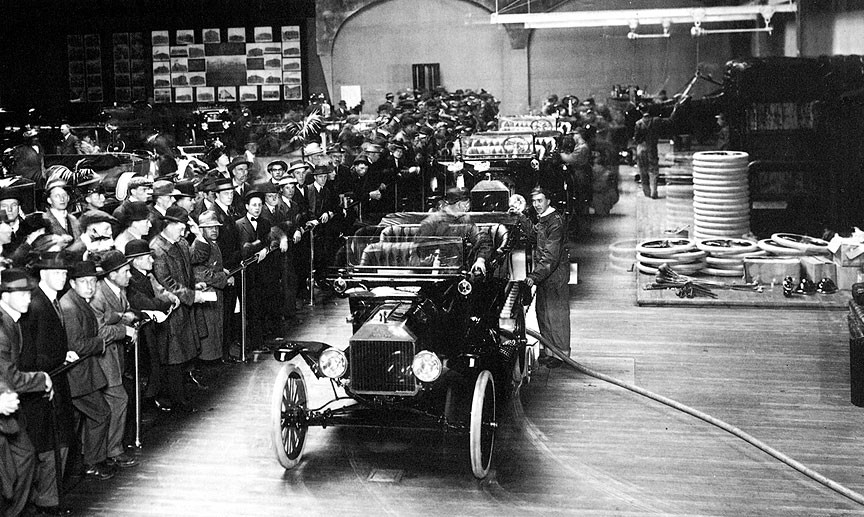The Panama-Pacific International Exposition of 1915 in San Francisco was a grand stage for innovation and progress. Among the groundbreaking exhibits, the Ford Motor Company’s working Model T assembly line stood out, offering visitors a firsthand look at the revolutionary process that was changing manufacturing and personal transportation forever. A period photograph captures this remarkable scene, providing a valuable glimpse into automotive history and the dawn of mass production.
 Ford Model T Assembly Line at the 1915 Panama-Pacific International Exposition, showcasing early 1915 models with speedometers and four-rivet fender brackets, demonstrating Henry Ford's mass production techniques in San Francisco.
Ford Model T Assembly Line at the 1915 Panama-Pacific International Exposition, showcasing early 1915 models with speedometers and four-rivet fender brackets, demonstrating Henry Ford's mass production techniques in San Francisco.
This image, likely taken in 1915, offers a fascinating perspective on the early Model T production. Keen observers have noted several details that pinpoint the vehicles being assembled as early 1915 models. One distinctive feature is the presence of a speedometer on the first car in the line, a relatively new addition at the time. Another key detail is the front fender bracket, secured with four rivets. This bracket style, a carryover from the 1914 models, was used from late 1913 to early 1915, further helping to date these vehicles.
The Panama-Pacific International Exposition, which ran from February 20 to December 4, 1915, served as an ideal platform for Henry Ford to showcase his revolutionary manufacturing techniques. Ford famously brought a fully functional Model T assembly line to the exposition. Within the exposition grounds, Ford’s team produced Model Ts at an impressive rate – reportedly 18 cars every day, working three hours a day, six days a week. This live demonstration not only captivated the public but also underscored the efficiency and scale of Ford’s mass production system, which made automobiles increasingly accessible to the average American.
Visitors to the exposition were able to witness the step-by-step creation of a Model T, from bare chassis to a complete, functioning automobile. The photograph encapsulates this process, showing various stages of assembly and the organized flow of parts and labor. Details like workers attending to the rear fuel tank of a vehicle on the line further enrich the scene, offering insights into the specific tasks involved in early automotive assembly. The Panama-Pacific International Exposition assembly line was more than just a display; it was a powerful symbol of American industrial ingenuity and the transformative impact of the automobile on society.
This period photo serves as a valuable historical document, reminding us of the pivotal role the 1915 Panama-Pacific International Exposition played in showcasing technological advancements and shaping public perception of the burgeoning automotive industry. It highlights a key moment in Ford’s history and the broader narrative of mass production, capturing the spirit of innovation and progress that defined the early 20th century.
